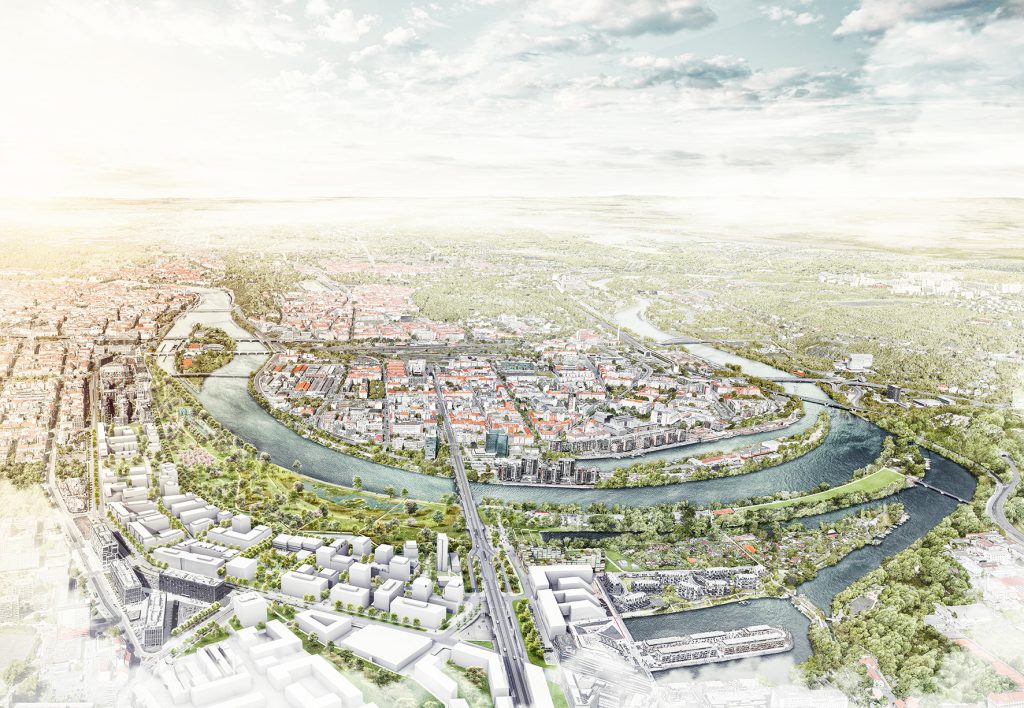
“Transforming Peripheries” is an international conference held in Sept. 2019 at the former University of the Arts and Design in Ulm, Germany.
Billboard
Skyscrapper
Halfpage
“Transforming Peripheries” was the title of an international conference held in September 2019 at the former University of the Arts and Design in Ulm, Germany. Attended by a number of renowned experts in the field, the conference “Transforming Peripheries” explored spaces that are neither city nor country and for which we still lack models that could provide lasting guidance for the future.
Challenges of urban lands
Among the featured speakers were Christian Schmid, Professor of Sociology at ETH Zurich, Tom Holbrook, founding principal of the London architectural office 5th Studio, Georgeen Theodore, a partner in the architecture and urban design firm Interboro in Brooklyn, Paola Viganò, Professor of Urbanism in Venice and Lausanne, and Andreas Hofer, Director of the IBA’27 Stuttgart City-Region.
“Transforming Peripheries”
The conference “Transforming Peripheries” produced a multitude of new insights: Among the crucial challenges of “urban lands” are the development of new mobility, transforming concepts and the reduction of land consumption per capita, which is still disproportionately high. At the current moment, the car continues to be the no. 1 means of transportation just as the land-consuming single-family home continues to be the most desired form of housing. It is the lack of attractive alternatives why these trends have not been broken
The conference “Transforming Peripheries” was the opening event of a research and transfer initiative directed by Ute Meyer, Professor for Urban Planning and Design at the University of Applied Sciences in Biberach. Titled “urbanes.land”. The goal of the conference as well as of further planned activities and events is to engender intensive exchanges with the sciences, political and economic stakeholders, as well as civil society agents. Another major goal of the initiative is to develop sustainable future-oriented solutions. We spoke to Professor Ute Meyer, initiator and director of the Urban Land Research and Transfer Initiative, about controversial aspects of the topic, research goals and the results of the conference.
Interview with Ute Meyer about “Transforming Peripheries”
Tanja Gallenmüller: Prof. Meyer, there are a number of different terms that have currency today – Zwischenstadt, periphery, urban land –, regardless of which one of them one uses, the topic is not new. Why do spaces that are neither urban nor rural continue to evoke our interest and why have they, from a planning perspective, become potentially more important than ever?
Ute Meyer: You are certainly right: the topic is not new. Urbanists in many European countries have been working on this since the 1990s. That’s another reason why we organized this conference However, the various potentials of such settlement areas that are, in our understanding, neither truly “urban” nor distinctly “rural”, have been much less researched than those of traditional core settlement areas. What we lack in particular are models for how the highly diverse functional mix of these spaces can be used effectively, and how we can open them up as a reserve for sustainable spatial development.
Medium Rectangle
Halfpage

Tanja Gallenmüller: Your focus is not on the big urban centres and their regions but on smaller and mid-sized cities such as the Ulm region in southern Germany. Where are the differences and what constitutes the specific challenges of Ulm, both city and region?
Ute Meyer: Our research addresses the “urban land” through a number of highly divergent approaches. One important focus is indeed on spaces characterized by small and mid-sized urban centres, such as the Ulm – Lake Constance region. But we also have other projects located at the edges of metropolitan regions, such as Brussels or Riga, which are structurally very similar. The Ulm–Lake Constance region does of course play a special role because it is right on our doorstep. This enables us to establish, in ways that are uncomplicated, important cooperation projects between the universities of the region, policy makers, business leaders and local community groups. And our “home region” is of special interest to us for other reasons as well: compared to the German national average, this is a particularly wealthy region. This circumstance is, for one, a reflection of certain historical origins, i.e. the autonomy of relatively small cities that became independent early on. It is also a region that can serve as a model for cooperation at a regional level.
Tanja Gallenmüller: What are, in your eyes, the new and the most important insights gained from the “Urban Land” conference, at a general level as well as with regard to Ulm?
Ute Meyer: There are three points to be made:
- There is a lot of available knowledge about the structural characteristics, but also about economic and social aspects of urban land all across Europe. This knowledge is being insufficiently distributed via the existing networks and above all there it isn’t nearly sufficiently available to those who do the planning.
- All speakers were approving of our approach and viewed it as a novel way to look for levers through which the potentials of settlement areas can be used for sustainable development. The participants too were laudatory of this aspect. We will build on these efforts and feel encouraged to expand the transfer initiative. Useful levers could be functional neighbourhoods (proximities), finite resources (mobility, water, land…) as well as new forms of cooperation and financing models.
- It doesn’t always have to be the big cities that take a pioneering role. This is in fact a realization – according to the feedback we received – that many of the participants took home with them.












